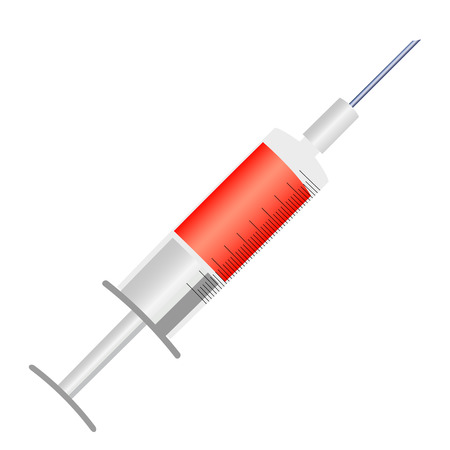Defining Allergy-Prone and Sensitive Skin
When it comes to skincare, the terms “allergy-prone” and “sensitive skin” are often used interchangeably, but they actually describe two different conditions. Understanding these differences is important for choosing the right products and routines that keep your skin healthy and comfortable.
What Is Allergy-Prone Skin?
Allergy-prone skin reacts when it comes into contact with specific substances known as allergens. These allergens might be found in skincare products, laundry detergents, fabrics, or even in the environment like pollen or pet dander. People with allergy-prone skin might develop redness, itching, swelling, or hives after exposure to a trigger. The reaction usually happens quickly after contact.
What Is Sensitive Skin?
Sensitive skin generally means your skin is easily irritated by things that typically wouldn’t bother most people. This could include weather changes, fragrances, dyes, or even hot water. Symptoms of sensitive skin may include stinging, burning, tightness, dryness, or mild redness. Unlike allergies, reactions aren’t always linked to a specific ingredient or allergen and can develop over time.
Key Differences Between Allergy-Prone and Sensitive Skin
| Feature | Allergy-Prone Skin | Sensitive Skin |
|---|---|---|
| Main Trigger | Specific allergens (e.g., fragrance, preservatives) | General irritants (e.g., weather, harsh soaps) |
| Reaction Time | Usually immediate or within hours | Can be immediate or gradual |
| Common Symptoms | Redness, itching, swelling, hives | Tingling, burning, dryness, mild redness |
| Duration of Reaction | May last until allergen is removed and treated | Improves once irritant is avoided or with gentle care |
| Causative Factor | Immune response to specific substances | Overreactive skin barrier or nerve endings |
How to Recognize Each Condition
If you notice your skin reacts strongly only to certain ingredients or environments—and the reaction is intense—it may be allergy-prone. If your skin feels uncomfortable more generally and is triggered by everyday exposures like wind or new skincare products without a clear pattern, it’s more likely sensitive. Paying attention to when and how your symptoms show up can help you figure out which category you fall into.
2. Understanding the Causes
When it comes to allergy-prone and sensitive skin, there isn’t just one cause behind the reactions you might experience. Instead, a mix of genetics, environment, and lifestyle choices all play a role in how your skin responds to different triggers. Let’s break down these factors to better understand why some people are more likely to deal with sensitive or allergy-prone skin than others.
Genetics: The Role of Family History
If your parents or siblings have sensitive or allergy-prone skin, there’s a good chance you might experience similar issues. Genetics can influence how your skin reacts to allergens, irritants, and even stress. For example, people with a family history of eczema, asthma, or hay fever are often more likely to develop sensitive skin themselves.
Environmental Triggers
Your surroundings matter—a lot! Everyday things like air pollution, pollen, dust mites, harsh weather (think hot summers or cold winters), and even the water in your area can affect your skin’s sensitivity. Moving to a new city with different environmental factors can sometimes trigger new skin reactions as well.
Lifestyle Factors That Make a Difference
The way you live day-to-day has a big impact on your skin health. Here are some common lifestyle elements that may contribute to sensitivity:
| Lifestyle Factor | How It Affects Skin |
|---|---|
| Diet | Certain foods (like spicy dishes or dairy) may cause flare-ups in sensitive individuals. |
| Stress | High stress levels can weaken your skin barrier and trigger allergic reactions. |
| Skincare Habits | Over-cleansing or using products with strong fragrances and chemicals may lead to irritation. |
| Lack of Sleep | Poor sleep can make your skin more reactive and slower to heal. |
| Smoking & Alcohol | Both can dry out the skin and lower its defenses against irritants. |
A Quick Look at Common Triggers
- Fragrances: Perfumes in skincare and household products are common irritants for sensitive skin.
- Dyes: Artificial colors in cosmetics or detergents can cause allergic reactions.
- Certain Fabrics: Wool or synthetic materials may make sensitive skin feel itchy or uncomfortable.
- Sun Exposure: UV rays can worsen sensitivity, especially if you’re already prone to allergies.
Understanding these causes helps you take better care of your skin and make choices that minimize discomfort. By paying attention to genetic factors, environmental exposures, and daily habits, it’s possible to reduce flare-ups and keep your skin feeling its best.
![]()
3. Common Triggers in Everyday Life
Living in the United States, its hard to avoid common allergens and irritants that can trigger reactions in people with allergy-prone or sensitive skin. Understanding these triggers is key to keeping your skin calm and comfortable.
Typical American Allergens and Irritants
Some of the most common culprits found in American homes and environments include:
| Trigger | Where Its Found | How It Affects Sensitive Skin |
|---|---|---|
| Pollen | Outdoors (trees, grass, flowers), brought inside on clothes and pets | Can cause redness, itchiness, and flare-ups for sensitive skin types during allergy seasons |
| Pet Dander | Cats, dogs, and other furry pets; present on furniture, carpets, clothing | May lead to irritation, rashes, or eczema, especially after direct contact with animals or their belongings |
| Cosmetics & Skincare Products | Makeup, lotions, sunscreens, perfumes commonly used daily | Certain ingredients like fragrances, preservatives (parabens), or dyes often cause stinging, burning, or breakouts on sensitive skin |
| Household Cleaning Products | Laundry detergents, surface cleaners, air fresheners used at home | Harsh chemicals such as bleach or ammonia can dry out skin or cause allergic contact dermatitis when touched or inhaled |
| Mold Spores | Damp basements, bathrooms, air conditioning units; prevalent in humid areas | Mold exposure can prompt itching and inflammation in those with sensitivities or pre-existing allergies |
| Nickel & Other Metals | Jewelry, watchbands, belt buckles, zippers commonly worn or handled daily | Direct contact might result in rashes or blisters for people with metal sensitivities (nickel allergy is quite common) |
| Latex Products | Disposable gloves, balloons, some sports equipment frequently used in homes and workplaces | Can cause immediate itching or even hives upon skin contact in individuals with latex allergies or sensitivity |
Recognizing Your Personal Triggers
Sensitive skin reacts differently from person to person. While one individual may have issues with pollen during springtime, another might find their skin gets upset after using a new laundry detergent. Keeping track of your own reactions—perhaps by writing them down—can help you identify which everyday products or situations are causing problems.
Tips for Minimizing Exposure at Home:
- Avoid heavily scented products: Choose fragrance-free versions of laundry detergents and body care items.
- Use gentle cleaning agents: Opt for hypoallergenic household cleaners and wear gloves if possible.
- Bathe pets regularly: This helps reduce dander buildup in your living space.
- Change air filters frequently: Especially during high pollen seasons or if you live with pets.
- Select simple skincare formulas: Look for products labeled as “for sensitive skin” with minimal ingredients.
- Avoid costume jewelry if you have a metal allergy: Stick to hypoallergenic materials like stainless steel or titanium.
4. Impact on Daily Routines and Self-Care
How Sensitive and Allergy-Prone Skin Shapes Everyday Life in the US
Living with sensitive or allergy-prone skin isn’t just about watching out for rashes—its something that can affect daily habits, routines, and choices. In the US, where there’s a huge variety of products and changing weather conditions, people with this skin type often need to be extra careful. Let’s explore how it shapes their day-to-day lives.
Skincare Choices
People with sensitive or allergy-prone skin usually stick to gentle, fragrance-free products. They read ingredient labels closely and often choose brands labeled “hypoallergenic” or “dermatologist-tested.” Trying new products can be stressful, so patch testing (testing on a small area first) is common.
Common Skincare Habits
| Habit | Description |
|---|---|
| Gentle Cleansing | Using mild, soap-free cleansers to avoid irritation |
| Moisturizing | Applying fragrance-free moisturizers to prevent dryness and reactions |
| Patch Testing | Testing new products on a small area before full use |
| Avoiding Exfoliants | Limiting scrubs and acids that may irritate the skin further |
Makeup Decisions
Choosing makeup is also different. Many Americans with sensitive skin opt for mineral-based or hypoallergenic makeup brands. Avoiding certain ingredients like parabens, fragrances, and dyes is a must. Some even skip makeup altogether if they notice frequent reactions.
Laundry Habits
Laundry products are a big deal for allergy-prone skin. Many people in the US switch to “free & clear” detergents—these are made without dyes or perfumes that can trigger skin problems. Fabric softeners and dryer sheets are often avoided too.
Laundry Product Comparison Table
| Laundry Product Type | Sensitive Skin Recommendation? | Reason |
|---|---|---|
| Regular Detergent (with fragrance) | No | Can contain harsh chemicals and fragrances that irritate skin |
| Free & Clear Detergent | Yes | No added dyes or perfumes; less likely to cause reactions |
| Fabric Softener/Dryer Sheets | No | Often contains fragrances and chemicals that may cause irritation |
| Baking Soda/Vinegar (as alternatives) | Yes (in moderation) | Mild, natural options for those looking to avoid commercial products entirely |
Sun Protection Needs
The sun can be especially harsh for sensitive and allergy-prone skin. Many choose mineral sunscreens (with zinc oxide or titanium dioxide), which sit on top of the skin instead of absorbing in. Chemical sunscreens are more likely to cause stinging or allergic reactions.
Sunscreen Tips for Sensitive Skin:
- Select broad-spectrum mineral sunscreen SPF 30 or higher.
- Avoid sprays and gels that might contain alcohol or fragrance.
- Reapply every two hours when outdoors.
This focus on gentle self-care helps people with sensitive or allergy-prone skin feel more comfortable and confident as they go about their lives in the US.
5. Tips for Managing and Protecting Sensitive Skin
Choosing the Right Products
When you have sensitive or allergy-prone skin, picking the right skincare products is essential. Look for labels like “fragrance-free,” “hypoallergenic,” and “dermatologist-tested.” In the U.S., many brands highlight these features because so many people deal with allergies and sensitivities. Always check the ingredient list for common irritants such as alcohol, sulfates, parabens, and artificial dyes. If you’re unsure about a product, try a patch test on your wrist or behind your ear before applying it to your face.
Popular American Brands for Sensitive Skin
| Brand | Key Features | Best For |
|---|---|---|
| Cetaphil | No fragrance, gentle formulas | Cleansers and moisturizers |
| CeraVe | Ceramides, fragrance-free options | Moisturizers and cleansers |
| Neutrogena | Non-comedogenic, sensitive lines available | Sunscreen, makeup removers |
| Vanicream | No dyes, fragrance, or formaldehyde | Lotions and washes for allergies |
| Eucerin | Mild, dermatologically recommended formulas | Body lotions and creams |
Building a Simple Routine that Works in the U.S.
A basic skincare routine helps reduce irritation. Start with a gentle cleanser, follow with a light moisturizer, and always use sunscreen—especially since many American cities have high UV exposure. Avoid using too many products at once; less is often more when it comes to sensitive skin. Stick to routines that focus on hydration and protection without harsh treatments unless directed by your dermatologist.
Sample Minimal Routine for Sensitive Skin:
- AM: Gentle cleanser → Moisturizer → Broad-spectrum SPF 30+ sunscreen (mineral sunscreens are often less irritating)
- PM: Gentle cleanser → Moisturizer (look for calming ingredients like oat extract or aloe)
Navigating Ingredient Labels in American Stores
In the U.S., ingredients are listed from highest to lowest concentration. Focus on the first five ingredients—they make up most of what’s in the bottle. Watch out for terms like “natural” or “organic”—these don’t always mean safe for sensitive skin. Stick to clear claims like “allergy-tested” or “suitable for sensitive skin.” If shopping at big retailers (like Target, CVS, or Walgreens), ask store staff about their best-selling sensitive skin items—they often know which products work well locally.
Common Irritants to Avoid:
- Synthetic fragrances and perfumes
- Alcohol denat.
- Sodium lauryl sulfate (SLS)
- Essential oils (can be too strong for some sensitive types)
- Dyes and color additives (often labeled as FD&C colors)
6. When to Seek Professional Help
Recognizing the Signs: When Is It Time to See a Specialist?
If you have allergy-prone or sensitive skin, it can be tough to know when home remedies are enough and when its time to see a professional. In the US, dermatologists and allergists are the go-to experts for skin issues. Here are some signs that you should schedule an appointment:
| Sign or Symptom | Why It Matters |
|---|---|
| Persistent itching or rash | If your symptoms last more than two weeks or keep coming back, a specialist can help identify the cause. |
| Swelling or hives | Sudden swelling, especially on the face or throat, can be serious and needs quick medical attention. |
| Painful or infected skin | If you notice pus, increased redness, warmth, or pain, there might be an infection that requires treatment. |
| No improvement with over-the-counter products | If common treatments aren’t working, a doctor can recommend stronger options tailored to your needs. |
| Difficulty identifying triggers | If you cant figure out what’s causing your reactions, allergy testing might be helpful. |
Choosing the Right Specialist: Dermatologist vs. Allergist
In the US healthcare system, both dermatologists and allergists can help with allergy-prone and sensitive skin. Here’s a quick guide to help you decide whom to visit:
| Specialist | What They Do | Best For |
|---|---|---|
| Dermatologist | Treats all kinds of skin problems, including rashes, eczema, and allergic reactions on the skin. | Skin symptoms like rashes, eczema, persistent dryness, or unexplained irritation. |
| Allergist (Immunologist) | Focuses on allergies, asthma, and immune system issues; offers allergy testing and management plans. | If you suspect food allergies, environmental triggers (like pollen), or have other allergic symptoms along with your skin issues. |
What to Expect During Your Visit in the US Healthcare System
Your First Appointment: What Happens?
Your first visit may include:
- A detailed history: The doctor will ask about your symptoms, lifestyle, diet, and any known allergies.
- A physical exam: They’ll look closely at your skin and may ask about your skincare routine.
- Possible tests: This might include patch testing for allergies or skin biopsies if needed.
- Treatment plan: You’ll get advice on medications (like prescription creams), lifestyle changes, or further testing if necessary.
Navigating Insurance and Costs in the US
If you have health insurance, check your policy to see which specialists are covered and whether you need a referral from your primary care provider. Many dermatologists and allergists accept major insurance plans, but always confirm before your visit. If youre paying out-of-pocket, ask about consultation fees ahead of time.
Pro Tip:
You can often find board-certified dermatologists and allergists by checking with organizations like the American Academy of Dermatology or the American College of Allergy, Asthma & Immunology. Scheduling an appointment is usually done online or by phone; some offices also offer telehealth visits for initial consultations.


